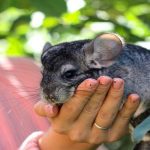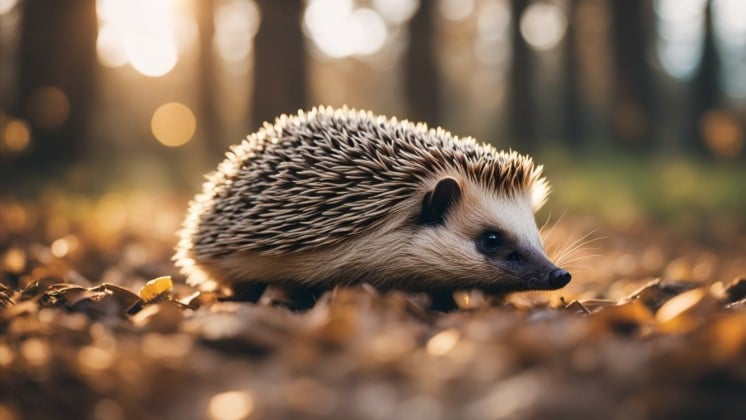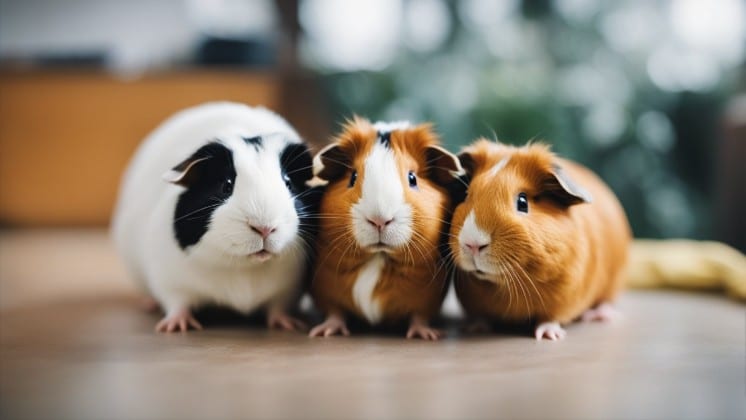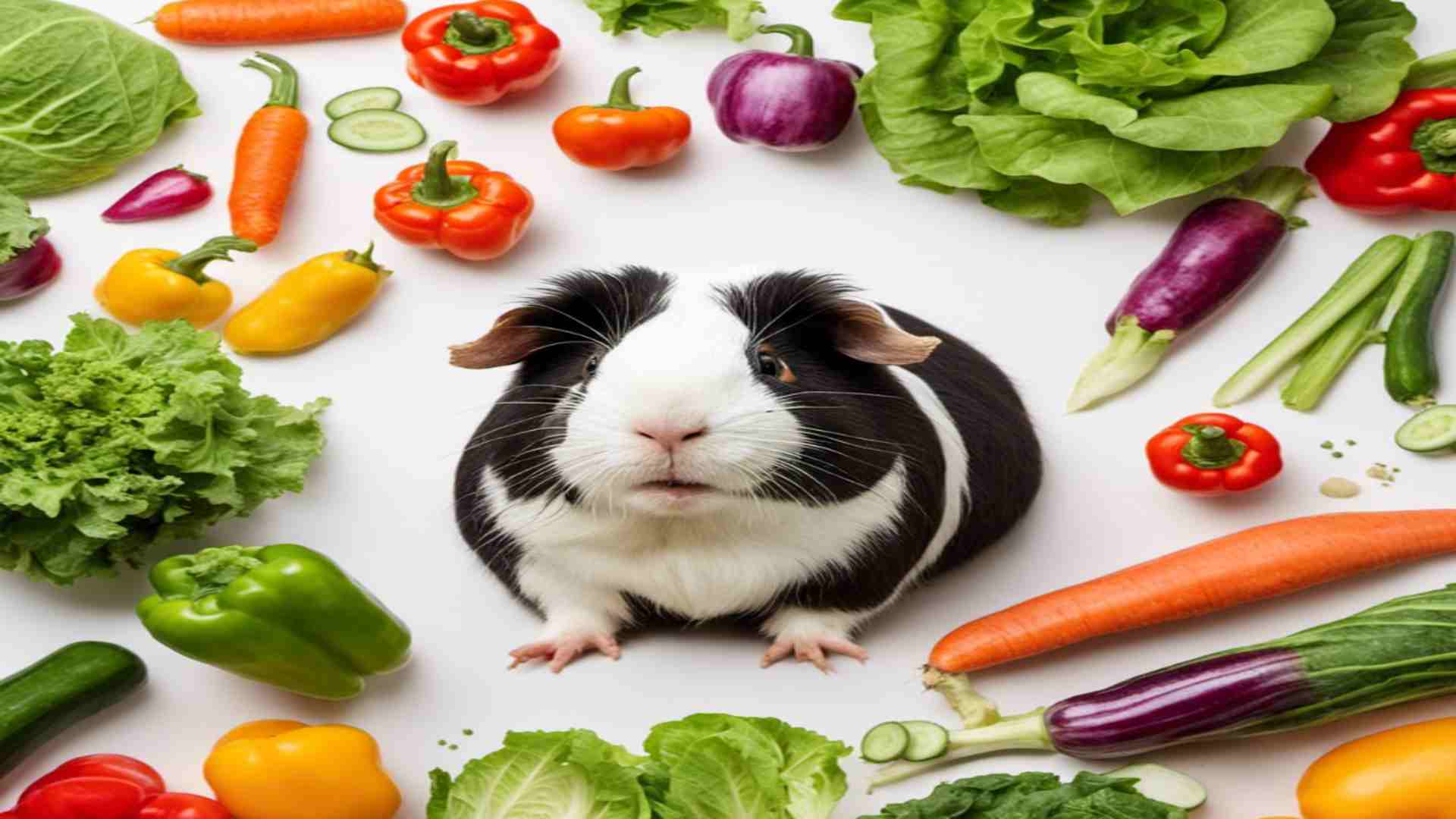If you are a chinchilla owner, you may have come across to the point of debating between wild and domestic chinchillas. This is because the two have their own fascinating differences that set them apart from each other.
So, what is the main difference?
Wild chinchillas are native to the Andes Mountains, have thicker fur, and are less social than domestic chinchillas. Domestic chinchillas are bred for their friendly nature, have a softer coat, and come in a wider range of colors. They are often kept as pets.
To help you better understand, let’s start with an overview of both animals.
Overview: Wild Chinchilla vs. Domestic
Let’s start with a concise overview of wild chinchillas vs domestic!
Wild chinchillas are native to the Andes Mountains in South America, and they tend to have thick fur. They are also known for being less social than domestic chinchillas.
Domestic chinchillas, on the other hand, have been selectively bred over time for their sweet nature and softer coats. Domestic chinchillas also come in a wide range of colors – from white, gray, and black to red, brown, and beige.
Now, let’s dive deeper into the differences between these two animals!
Wild Chinchilla: Physical description
Wild chinchillas are small, adorable rodents native to South America. They belong to the genus Chinchilla, which includes two species: Chinchilla lanigera (long-tailed chinchilla) and Chinchilla chinchilla (short-tailed chinchilla).
Both species have thick and soft fur that was highly valued by the Chincha people, who lived in the Andes Mountains. The main physical difference between the species is their tails: long-tailed chinchillas have a longer, bushy tail, while short-tailed chinchillas have shorter, more rounded tails.
Habitat description
Wild chinchillas thrive in the high mountains of the Andes in Chile, where they make their homes in rock crevices and burrows. The harsh habitat of these mountains provides them with protection from many predators. They live in colonies, which can range from a few individuals to more than 100.
Diet and eating habits
Chinchillas are herbivorous mammals, primarily feeding on plants, seeds, and fruits. Their diet consists mainly of native vegetation, such as grasses and shrubs. They also consume small insects and larvae for protein.
Being nocturnal, chinchillas forage for food during the evening and night hours, which helps them avoid daytime predators.
| Food Source | Frequency |
|---|---|
| Plants | Most common |
| Seeds | Regular |
| Fruits | Occasional |
| Insects and larvae | Rare |
Behavioral traits
Chinchillas are social animals that live in groups, which are called colonies. Their colonies provide safety and resources for all members of the group to survive. Chinchillas are known for their agility and ability to jump incredible heights and distances.
They are also great climbers, using their long whiskers to navigate through rocky terrain. When threatened, chinchillas may release fur as a defense mechanism to escape predators. They are also known to communicate through various vocalizations and body postures.
Threats and conservation status
Wild chinchillas face numerous threats, including habitat loss, climate change, and poaching for their fur. As a result, both species of wild chinchillas are currently listed as endangered by the International Union for Conservation of Nature (IUCN) on their Red List.
Conservation efforts include habitat restoration, captive breeding programs, and education about the importance of these unique creatures. It is our responsibility to help protect and preserve these charming rodents for future generations.
| Threat | Impact |
|---|---|
| Habitat loss | Significant |
| Poaching | High |
Domestic Chinchillas: Physical traits
Domestic chinchillas have several physical traits that make them unique pets. They are mammals belonging to the Chinchilla genus, which includes two species, Chinchilla lanigera, native to the Andes Mountains, and Chinchilla brevicaudata.
Read also: Are Chinchillas Messy Pets? Myths and Misconceptions
Our focus will be on the domesticated Chinchilla lanigera, the ones commonly seen as pets. These chinchillas are known for their extremely soft and dense fur, which helps them withstand cold temperatures in their natural habitat.
They typically weigh between 1.1 and 1.8 pounds, and their body length ranges from 10 to 14 inches.
Housing and environment
Providing a safe and comfortable environment for domestic chinchillas is crucial to their well-being. A large multi-level cage that allows for climbing and jumping is ideal. The cage should have the following:
- Wooden ledges for perching
- A hideout for resting and security
- Metal or ceramic food dishes for hay and chinchilla food
- A water bottle
- A dust bath container for grooming
Additionally, the cage should be placed in a quiet, well-ventilated area, away from direct sunlight or drafts.
Dietary requirements
Domestic chinchillas require a specific diet to meet their nutritional needs. The following dietary components are key to a healthy chinchilla:
- Hay. This should be the primary component of their diet, ideally Timothy or Orchard grass hay.
- Chinchilla pellets. Ensure they are high-fiber and specifically formulated for chinchillas.
- Fresh water. Always available and changed daily.
Occasionally, domestic chinchillas can be given treats such as small portions of dried fruits, vegetables, or wheatgrass. However, these treats should be limited to 1-2 times per week, as excessive treats can lead to obesity and other health issues.
Behavior and socialization
Domestic chinchillas are social animals and require interaction and bonding to stay happy and healthy. While they are generally nocturnal, they can adapt to their owner’s schedule.
It’s important to handle them gently and consistently to build trust. Regular playtime outside of their cage, in a secure and chinchilla-proofed space, is essential for their physical and mental stimulation.
Introducing a companion chinchilla is another way to enhance their socialization needs. Keep in mind that introductions should be done carefully, and the chinchillas should be monitored closely to ensure compatibility.
Breeding and lifespan
Domestic chinchillas reach sexual maturity around 8 months of age. Breeding chinchillas should be done responsibly and with a clear understanding of the commitment and care needed for both the parent chinchillas and offspring.
Domesticated chinchillas have a longer lifespan than their wild counterparts, typically living between 10 and 20 years with proper care. However, this can vary depending on factors such as genetics and overall health.
Chinchilla species and their differences
Although both wild and domestic chinchillas share many of the same traits, there are also some key differences. Let’s explore these differences in more detail.
Chinchilla lanigera
The Chinchilla lanigera, also known as the long-tailed chinchilla, is one of the two main species of chinchilla. This species is often found in its natural habitat, including the Andean mountains of South America. As domesticated pets, we commonly find long-tailed chinchillas in our homes.
Their fur is denser than other chinchilla species, providing them with excellent insulation against the harsh weather conditions of their high-altitude habitat.
Long-tailed chinchillas are known for their distinctive physical characteristics. They have elongated tails relative to their body size, which can reach up to 15 cm (6 inches) in length.
Their ears are also large and rounded, which helps them with heat dissipation and hearing predators. Chinchilla lanigera females give birth to an average of two offspring per litter, known as kits.
Chinchilla Chinchilla
The other primary species of chinchilla is the Chinchilla chinchilla, or short-tailed chinchilla, which is currently considered critically endangered. Short-tailed chinchillas are also native to the Andean mountains and share similar habitats with their long-tailed cousins.
The short-tailed chinchilla is named for its shorter tail, which reaches an average length of 10 cm (4 inches). This species also has slightly smaller ears compared to long-tailed chinchillas and denser fur.
The Chinchilla chinchilla females tend to have larger litters than Chinchilla lanigera, giving birth to an average of three kits per litter.
Comparing different species
Both Chinchilla lanigera and Chinchilla chinchilla belong to the same genus and have similar scientific classifications. However, there are key differences in their physical characteristics and average number of offspring.
| Species | Tail Length | Ear Size | Fur Density | Average Offspring per Litter |
|---|---|---|---|---|
| Chinchilla lanigera | Long | Large | Dense | 2 |
| Chinchilla chinchilla | Short | Smaller | Denser | 3 |
In conclusion, the long-tailed and short-tailed chinchillas are separate species with distinct physical characteristics, including differences in tail length, ear size, fur density, and number of offspring.
Chinchilla Fur Trade History and Impact
In this section, we will discuss the history of the chinchilla fur trade and its impact on wild chinchilla populations. Chinchillas have long been prized for their soft, dense fur, which led to the development of a thriving fur industry in the 19th and early 20th centuries.
During this time, millions of chinchilla pelts were exported, primarily from their native South America, to meet the high demand for luxury fur products.
Unfortunately, the fur trade significantly impacted wild chinchilla populations, leading to a dramatic decline in their numbers. Overhunting and the loss of habitat contributed to their rapid decline, eventually raising concerns about their survival.
By the middle of the 20th century, wild chinchillas were on the brink of extinction.
Modern impact and conservation efforts
Nowadays, the fur trade has shifted toward domesticated chinchillas, which are bred and raised specifically for their pelts. As a result, pressures on wild chinchillas have lessened. However, poaching remains a problem, as some individuals continue to illegally hunt chinchillas in the wild.
Currently, the International Union for Conservation of Nature (IUCN) has classified both the short-tailed chinchilla and the long-tailed chinchilla as endangered species.
It is essential for us to be aware of the historical context of the chinchilla fur trade and support conservation efforts to protect these unique animals from the threat of extinction.
Fortunately, there are a variety of measures being taken to ensure chinchilla survival. Some of these efforts include:
- Legal protection. Governments in the chinchilla’s native range have enacted laws to protect wild chinchillas from hunting and illegal trade.
- Habitat restoration. Efforts are being made to restore chinchilla habitats that have been degraded by human activity.
- Community-based conservation. Local communities are being educated about the importance of chinchilla conservation and are working to protect their native wildlife.
- Captive breeding. Captive breeding programs are being implemented to increase wild chinchilla populations and prevent inbreeding.
Frequently Asked Questions
What are the main differences between wild and domestic chinchillas?
There are several distinctions between wild and domestic chinchillas. Wild chinchillas generally have smaller bodies and rougher fur in comparison to their domestic counterparts. Additionally, wild chinchillas have evolved to better adapt to their natural habitat, whereas domestic chinchillas have been bred for specific traits that appeal to pet owners.
How do wild chinchilla habitats differ from domestic environments?
Wild chinchillas are found in the Andean mountain range in South America, where they live in rocky, elevated terrain. They take shelter in crevices and caves, forming social colonies. Domestic chinchillas, on the other hand, live in a variety of indoor environments provided by their owners, including cages or playpens with proper bedding and ample space.
What do wild chinchillas eat compared to domestic chinchillas?
In the wild, chinchillas primarily consume plant-based diets, consisting of grasses, seeds, and shrubs. Domestic chinchillas should be provided with a balanced diet that mirrors their natural eating habits—high-quality chinchilla pellets, fresh water, and small amounts of hay and fresh vegetables will suffice. Treats like fruits and nuts should be offered sparingly to prevent health issues.
Are there any differences in behavior between wild and domesticated chinchillas?
While both wild and domestic chinchillas share similar social behaviors, there are some differences. Wild chinchillas are known to be more active and agile due to their natural habitat’s demands. Domestic chinchillas, while still active, may appear more docile and comfortable with handling, as they have been reared in captivity and are accustomed to human interaction.
What threats do wild chinchillas face in their natural habitat?
Wild chinchillas are vulnerable to various threats, including habitat loss, climate change, and predation by larger mammals and birds of prey. However, the most significant threat they face is poaching for their soft, luxurious fur. Over the years, chinchilla populations have drastically diminished, with some species now classified as critically endangered.
How many chinchilla species exist in the wild?
There are two primary species of chinchillas in the wild: the short-tailed chinchilla (Chinchilla chinchilla) and the long-tailed chinchilla (Chinchilla lanigera). While their habitats overlap, they have distinct physical features and behavioral characteristics. Both species are currently experiencing population declines due to human activities and habitat destruction.
Summary
This article discusses the differences between wild and domestic chinchillas. Here are the main points to take away:
- Wild chinchillas are native to the Andes Mountains, have thicker fur, and are less social than domestic chinchillas.
- Domestic chinchillas are bred for their friendly nature, have a softer coat, and come in a wider range of colors.
- Wild chinchillas are herbivorous mammals, primarily feeding on plants, seeds, and fruits. They also consume small insects and larvae for protein.
- Domestic chinchillas require a specific diet to meet their nutritional needs, including hay, chinchilla pellets, and fresh water.
- Domestic chinchillas are social animals and require interaction and bonding to stay happy and healthy.
- The chinchilla fur trade has had a significant impact on wild chinchilla populations, leading to a decline in their numbers. Conservation efforts include legal protection, habitat restoration, community-based conservation, and captive breeding programs.
Want to learn more about chinchillas?
Ready to boost your knowledge to the next level? If so, check out the articles below:
- Chinchillas Smell: 4 Clever Ways to Prevent Odors
- Can Chinchillas See in the Dark? (Important Facts)
- Chinchilla Bath Sand: Everything You Need To Know





